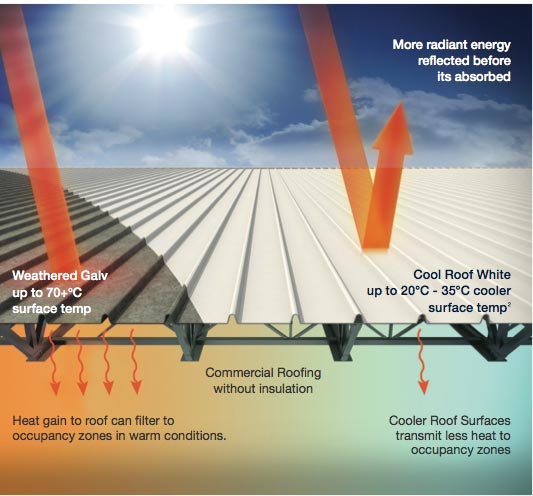Energy-Efficient Roofing Systems
During the summers, your roof can become extremely hot if it is not insulated properly. This is because the heat absorbed from the roof penetrates into your home and this is exactly why it takes longer for your air conditioner to create a cool zone inside your home and attain the desired room temperature. And let’s not forget, air conditioning units consume a lot of energy to run which means high utility bills.
In today’s post, we’ll explore different ways to help you convert your existing roof into an energy-efficient roofing system.

Cool Roof
Convert your regular roof into a cool roof by installing specialized heat reflective materials or re-cover it with a new waterproofing surface like tile coating. A cool roof is designed to specifically reflect heat. Unlike conventional roofing systems, cool roof has the ability to reflect more than 65 percent of the energy from the sun, thus, helping you reduce the temperature of your roof significantly. And since most of the heat is reflected, you no longer have to run your AC for long hours, which means high energy savings.
Green Roof
This is another way to make your roofing energy efficient. It is a mini-ecosystem/garden that covers your roof. The greenery essentially helps in reducing heat transfer, thereby keeping your property cool. Other benefits that you can enjoy include better rain water management and reduction in air pollution. However, as compared to a cool roof, green roofing systems can be expensive to implement.
Cool Roof Color Materials (CRCMs)
Made from complex in-organic color pigments, cool roof color materials can absorb less solar energy that is much needed to keep homes cool during the summers. These can be applied to the existing surfaces like asphalt, metal and even gravel. Other benefits of this option include algae growth suppression and improved adhesion.






